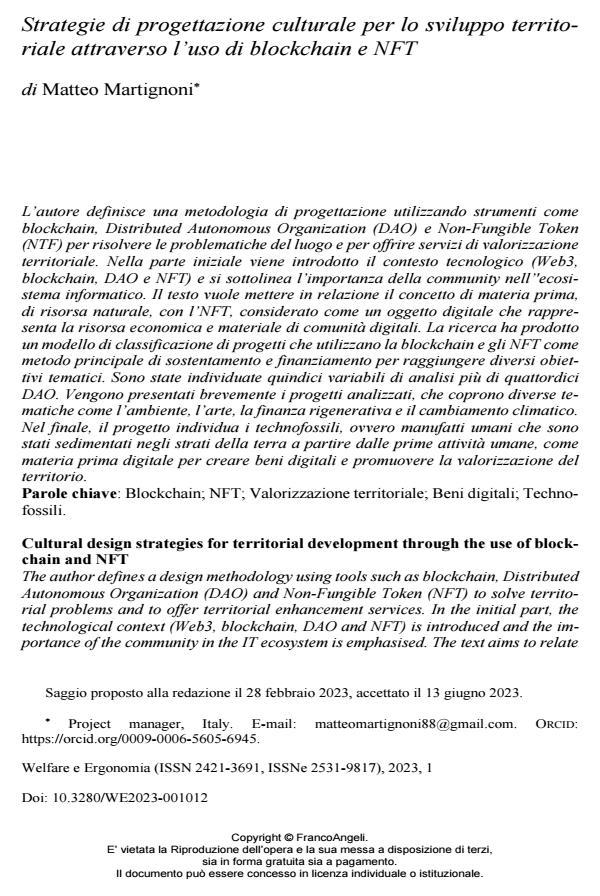Cultural design strategies for territorial development through the use of blockchain and NFT
Journal title WELFARE E ERGONOMIA
Author/s Matteo Martignoni
Publishing Year 2023 Issue 2023/1
Language Italian Pages 11 P. 167-177 File size 233 KB
DOI 10.3280/WE2023-001014
DOI is like a bar code for intellectual property: to have more infomation
click here
Below, you can see the article first page
If you want to buy this article in PDF format, you can do it, following the instructions to buy download credits

FrancoAngeli is member of Publishers International Linking Association, Inc (PILA), a not-for-profit association which run the CrossRef service enabling links to and from online scholarly content.
The author defines a design methodology using tools such as blockchain, Distrib-uted Autonomous Organization (DAO) and Non-Fungible Token (NFT) to solve territorial problems and to offer territorial enhancement services. In the initial part, the technological context (Web3, blockchain, DAO and NFT) is introduced and the importance of the community in the IT ecosystem is emphasised. The text aims to relate the concept of raw material, of natural resources, with the NFT, considered as a digital object that represents the economic and material re-sources of digital communities. The research produced a classification model of projects that use blockchain and NFTs as their main method of sustenance and funding to achieve different thematic objectives. 15 analysis variables plus 14 DAOs were identified. The analysed projects are briefly presented, covering dif-ferent topics such as environment, art, regenerative finance and climate change. In the finale, the project identifies technofossils, i.e. human artefacts that have been sedimented in the earth’s layers since the earliest human activities, as digi-tal raw material to create digital assets and promote land valorisation.
Keywords: Blockchain; NFT; Territorial development; Digital goods; Technofos-sils.
Matteo Martignoni, Strategie di progettazione culturale per lo sviluppo territoriale attraverso l’uso di blockchain e NFT in "WELFARE E ERGONOMIA" 1/2023, pp 167-177, DOI: 10.3280/WE2023-001014